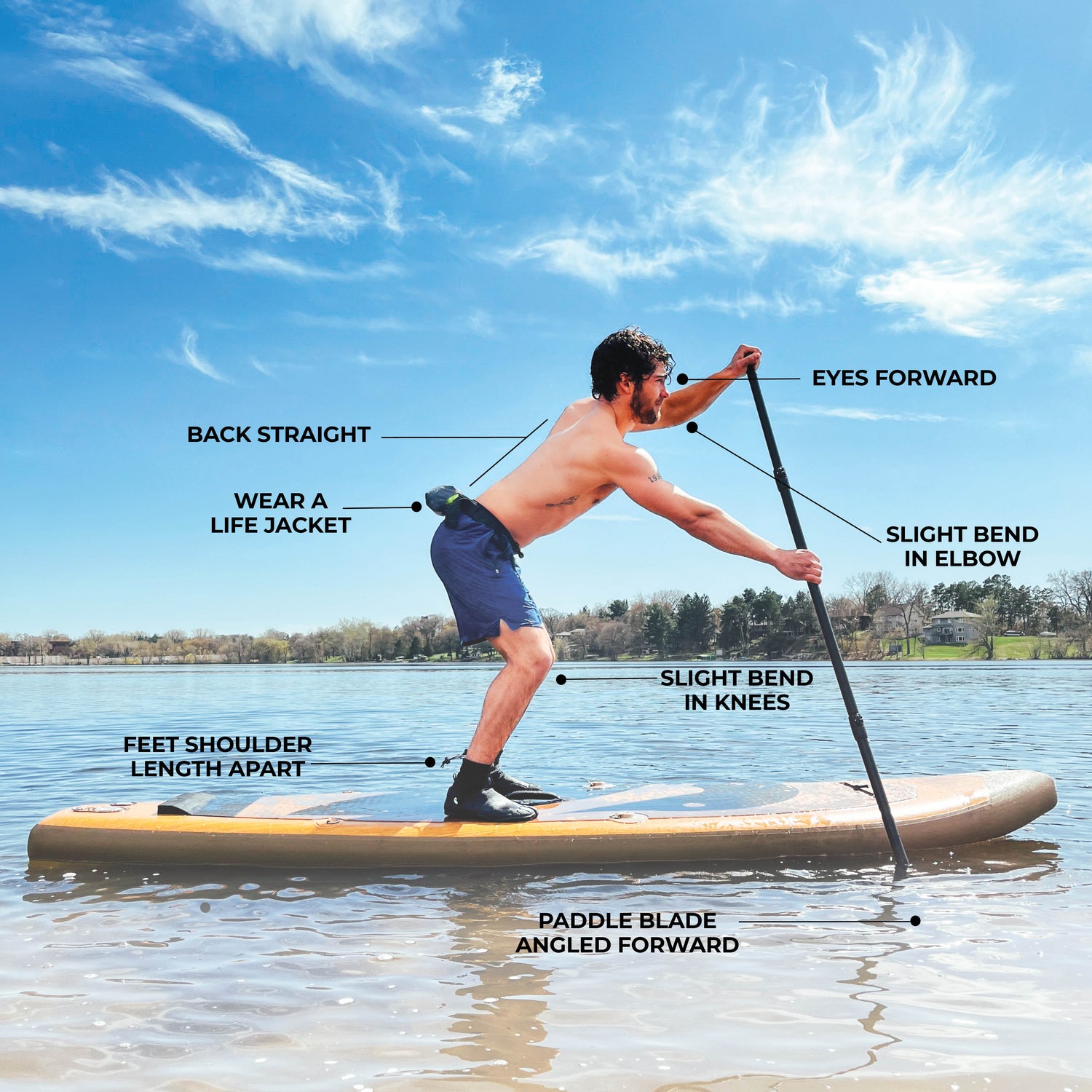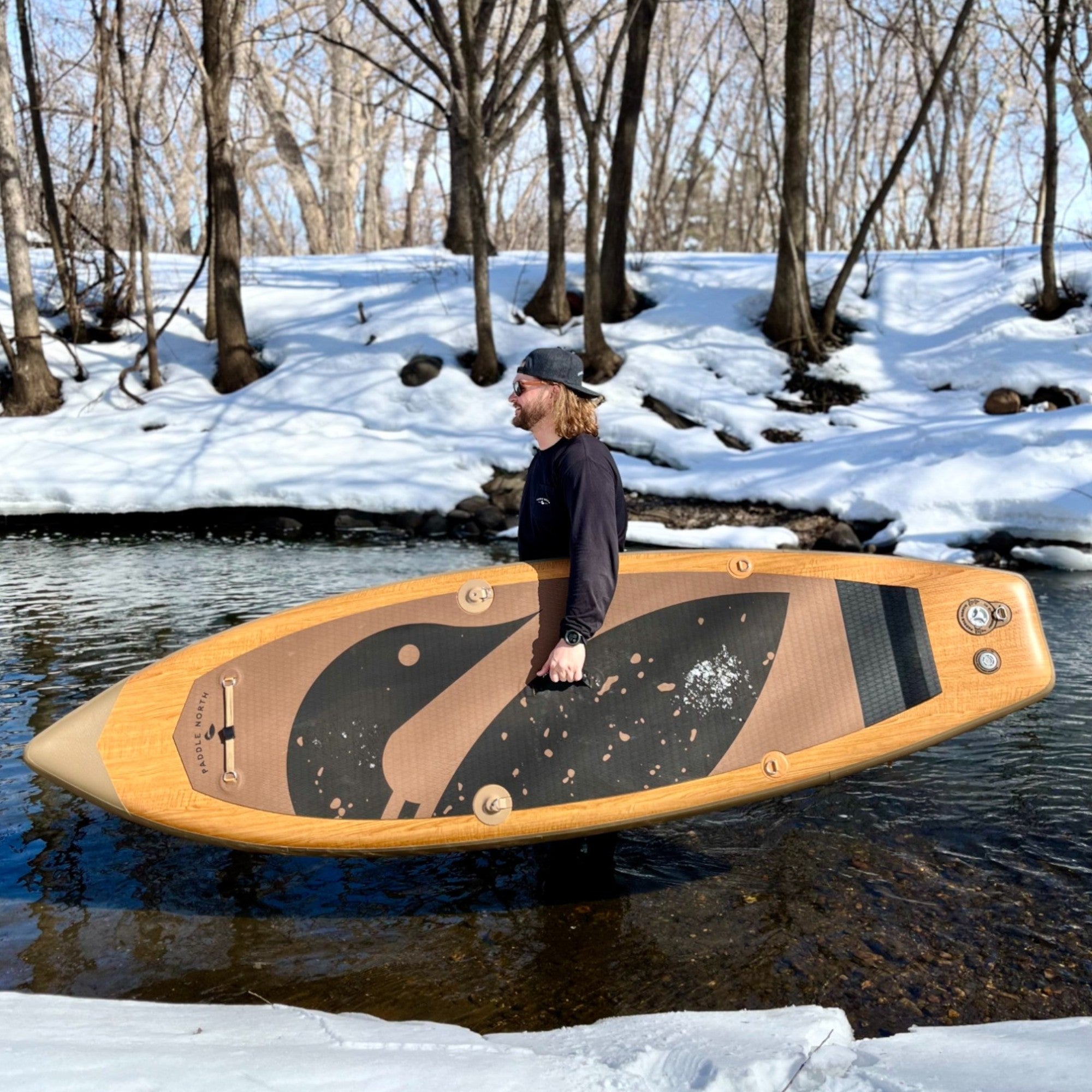Paddle boarding can seem both simple and complicated at the same time. If you’re just starting out, here are a few quick tips that can help remove some of the mystery so that you can get out on the water and have a stress-free paddling experience.
1) WHERE ARE YOU PADDLING?
When first learning how to paddle board, it’s important to choose calm waters and to go on a day with minimal wind (under 10mph). It’s also best to launch into an appropriate water depth. The easiest way to do this is to wade out past 15'' of water before you start paddling (depends on length of fin). This extra clearance ensures your fin won't get stuck on the bottom or caught on water plants or debris. If you're unsure of what paddle board to use for specific conditions, we recommend reading our paddle board size and weight chart as it details everything you need to know.
2) HOW TALL SHOULD THE PADDLE BE?
Adjust the paddle to the correct height by standing the paddle up in front of you with your arm straight up in the air, then flex your wrist down so it rests on the handle. This should be approximately 6"-8" above your head. Here is more information on how to size your paddle correctly.
3) WHERE ON THE BOARD SHOULD I BE?
Once you’re launched, center your weight front to back and side to side on the board. The center carry handle is usually a good starting point. It’s best to begin on your knees as you get familiar with the stability of the board.
If you’re ready to stand, it’s easiest to move to the standing position while the board is moving in the water. Lean forward, keeping your feet parallel and using your paddle for balance, and keep your eyes ahead of you (looking down at your feet can make you feel more disoriented and off-balance). Slowly rise to your feet by raising your chest first, then extend your legs. If you feel unstable or don’t have a solid stance, make your adjustments slowly. If you’re about to fall, remember that the water is soft and the board is hard, so always fall away from the board. Landing on your knees or falling forward/backward onto the board could result in hurting yourself or possibly damaging your board.
4) PADDLING BASICS
Paddle North boards are designed to track straight. You should be able to do 15-25 paddle strokes on each side of your board before you need to switch sides. The paddle should be angled toward the front of the board (loon logo facing forward). The ideal paddle stroke is done by leaning slightly forward and reaching your paddle blade about two feet in front of you. Push the blade all the way under the water. Pull straight back, keeping it straight/close to the board and not diagonal, then pick the paddle up and repeat. To continue in a straight line, you’ll need to occasionally alternate sides. Remember to switch hands (right side of the board, your left hand should be on top of the paddle, and on the left side of the board, your right hand should be on top). Keep your lower arm straight as you’re paddling. Try to use your back muscles (instead of your arms) to drive movement
5) SAFETY
Remember to always wear your personal flotation device or life jacket. As mentioned previously, be sure to fall away from your board if losing your balance. This will help you avoid injury. To get back on your board, swim up to the side and then kick out (not under) and pull yourself up with your chest flat, then go through the steps to stabilize yourself once again and begin paddling. Shop our life jackets here.
Paddle boarding can be a fun, challenging, and relaxing activity to do on solo, or with friends and family. The more you go, the more comfortable you’ll be. Paddle North staff are always here to offer help, tips, and suggestions, so let us know if you have any questions. Happy paddling!



Leave a comment
All comments are moderated before being published.
This site is protected by hCaptcha and the hCaptcha Privacy Policy and Terms of Service apply.